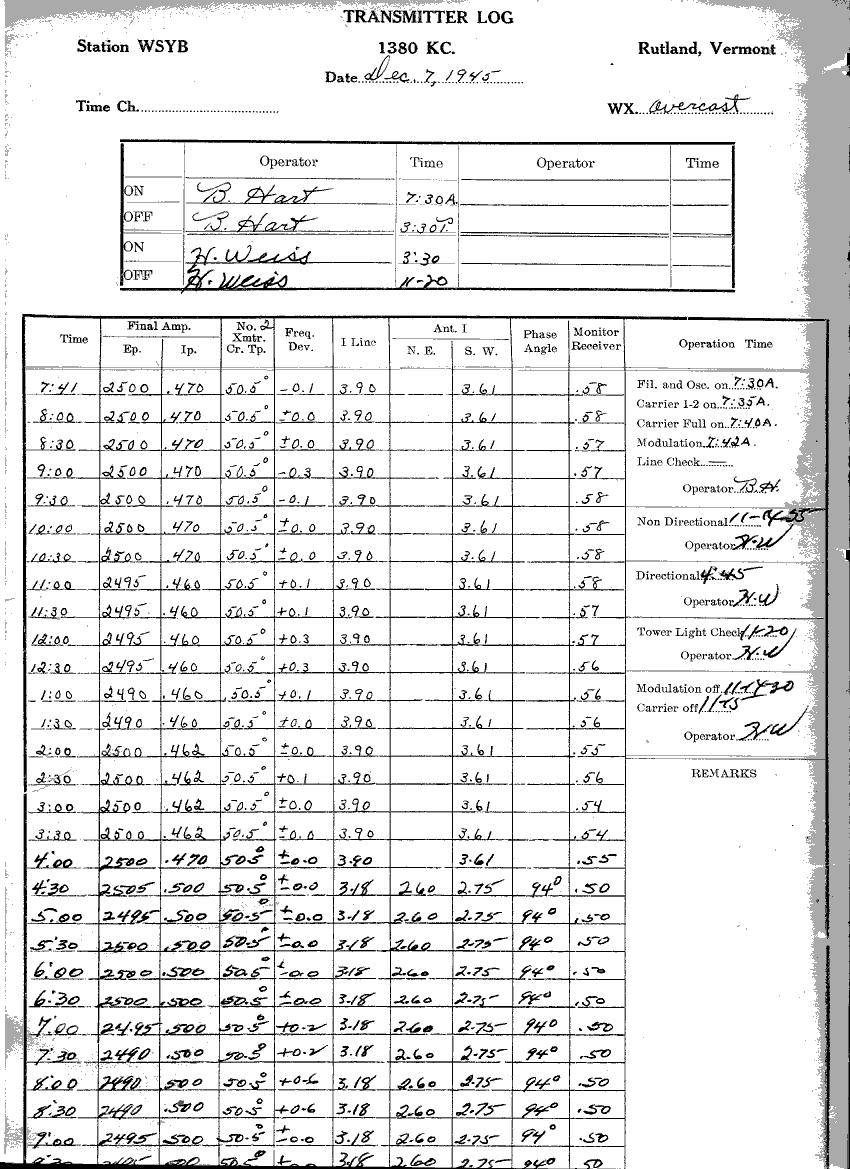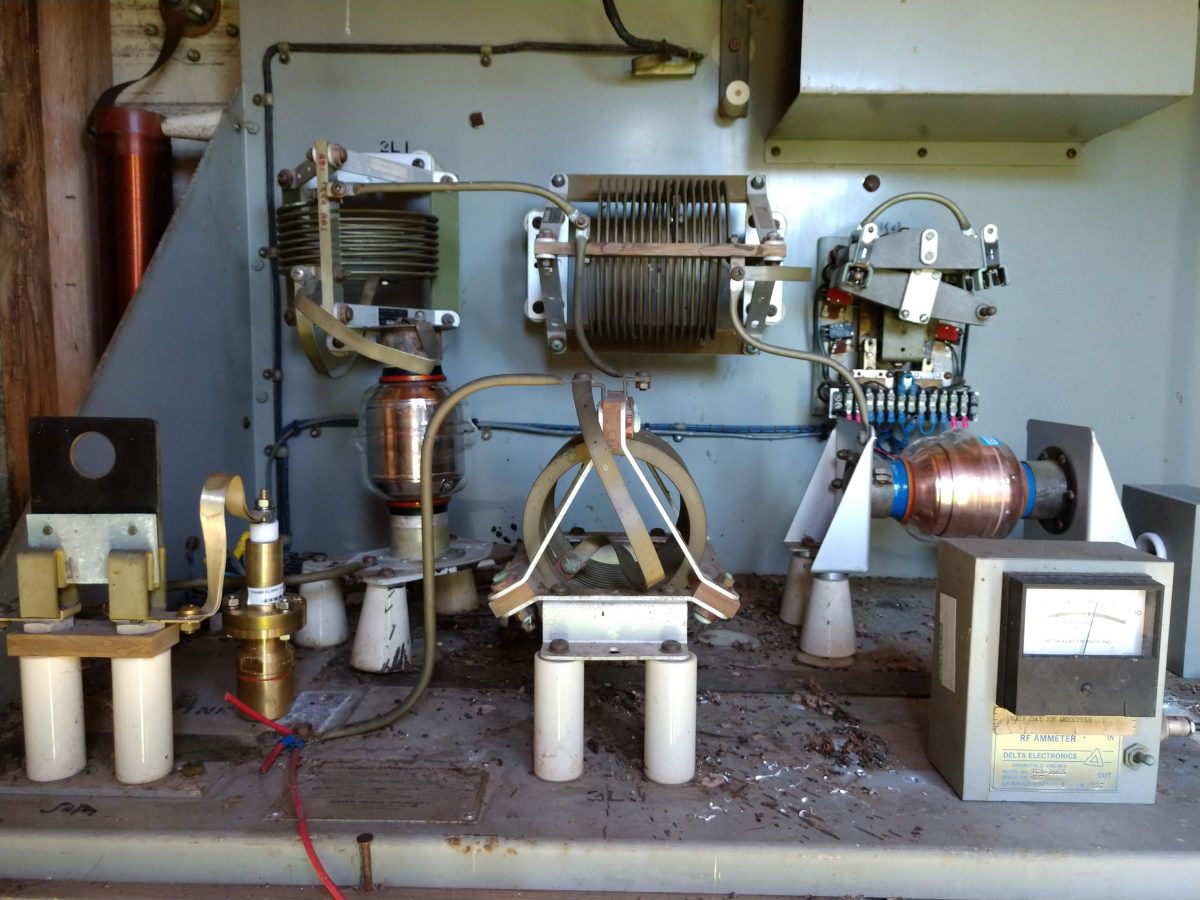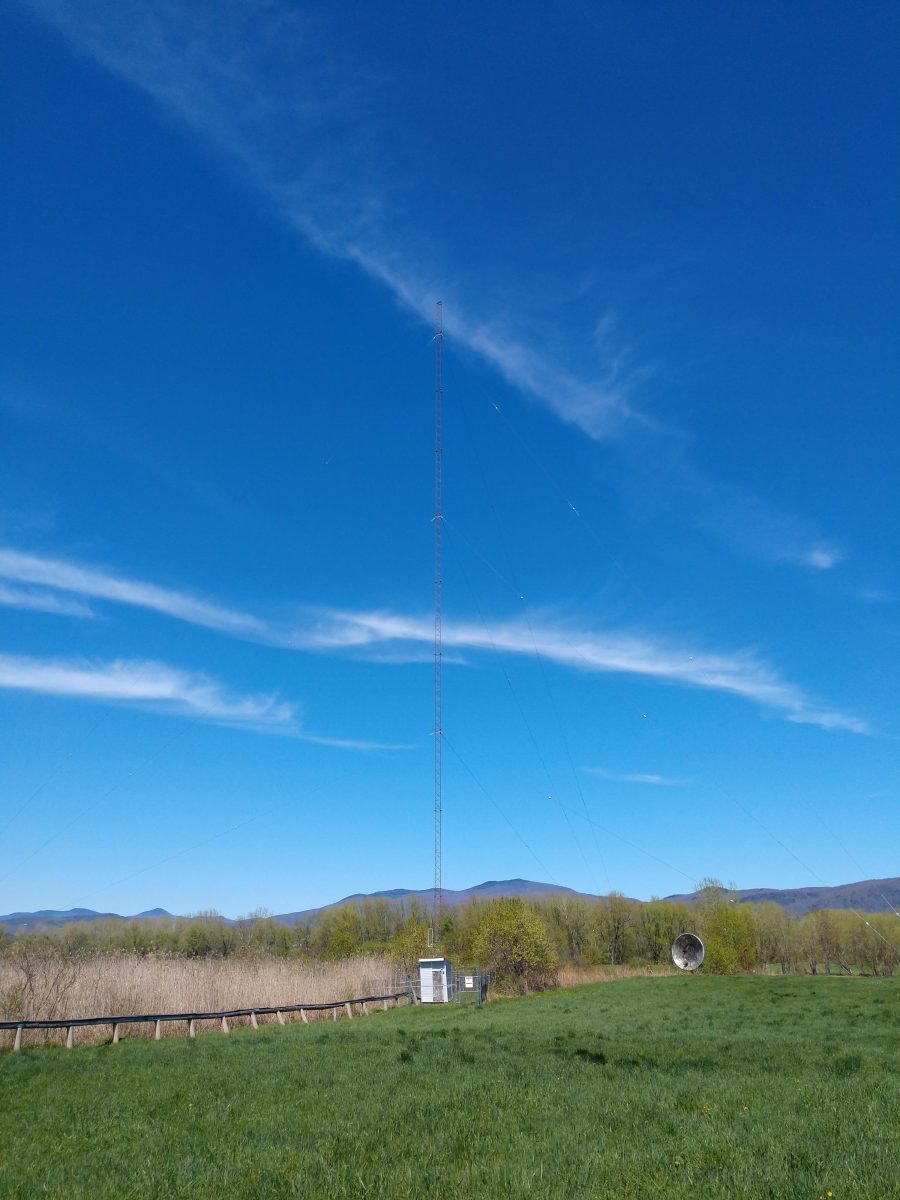This satellite dish nearly broke off of its mount during a “macroburst” event. According to the National Weather Service:
A macroburst is a thunderstorm downdraft affecting an area at least 2.5 miles wide with peak winds lasting 5 to 20 minutes. The macroburst is a straight-line wind phenomena not associated with rotation…used to differentiate from tornadic
winds. Macrobursts can produce as much if not more damage as tornadoes due to the size and scope of a macroburst.
On May 15th a large group of severe thunderstorms triggered at least three tornadoes and one macroburst event in eastern New York and Western Connecticut. Winds in the macroburst area were estimated to be in the 85 to 105 MPH range.
The next morning, it took a long time to get the the clients studio. Trees where down everywhere, roads were closed, traffic lights not working, etc. This created numerous detours and traffic jams. When I finally arrived at a clients studio facility, this was the first thing I noticed:
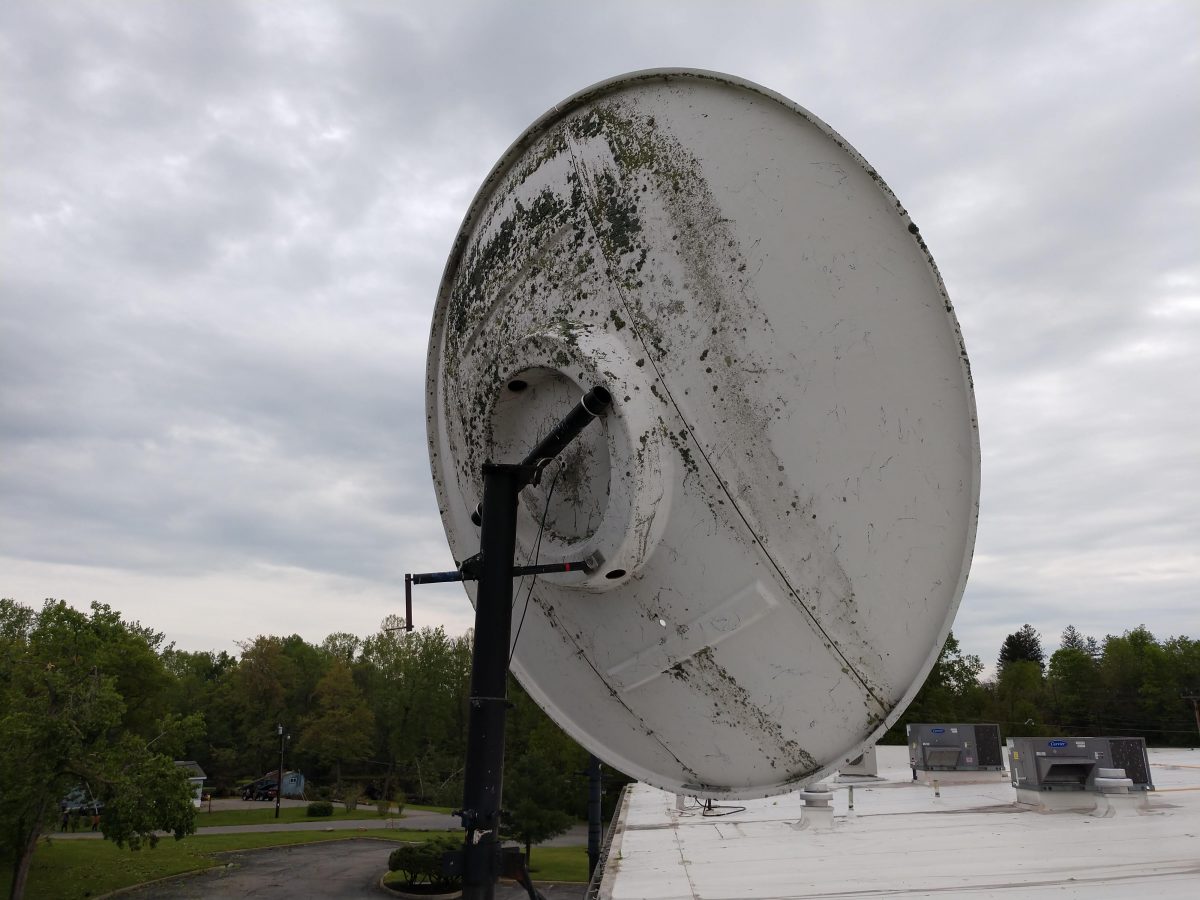
That is an older 3.8 meter comtech dish hanging on by one 3/8 inch stainless steel U bolt. The funny thing is, they did not complain about this or the lack of satellite service. The main complaint was that the studios were on generator and some of the lights and air conditioners were not working.
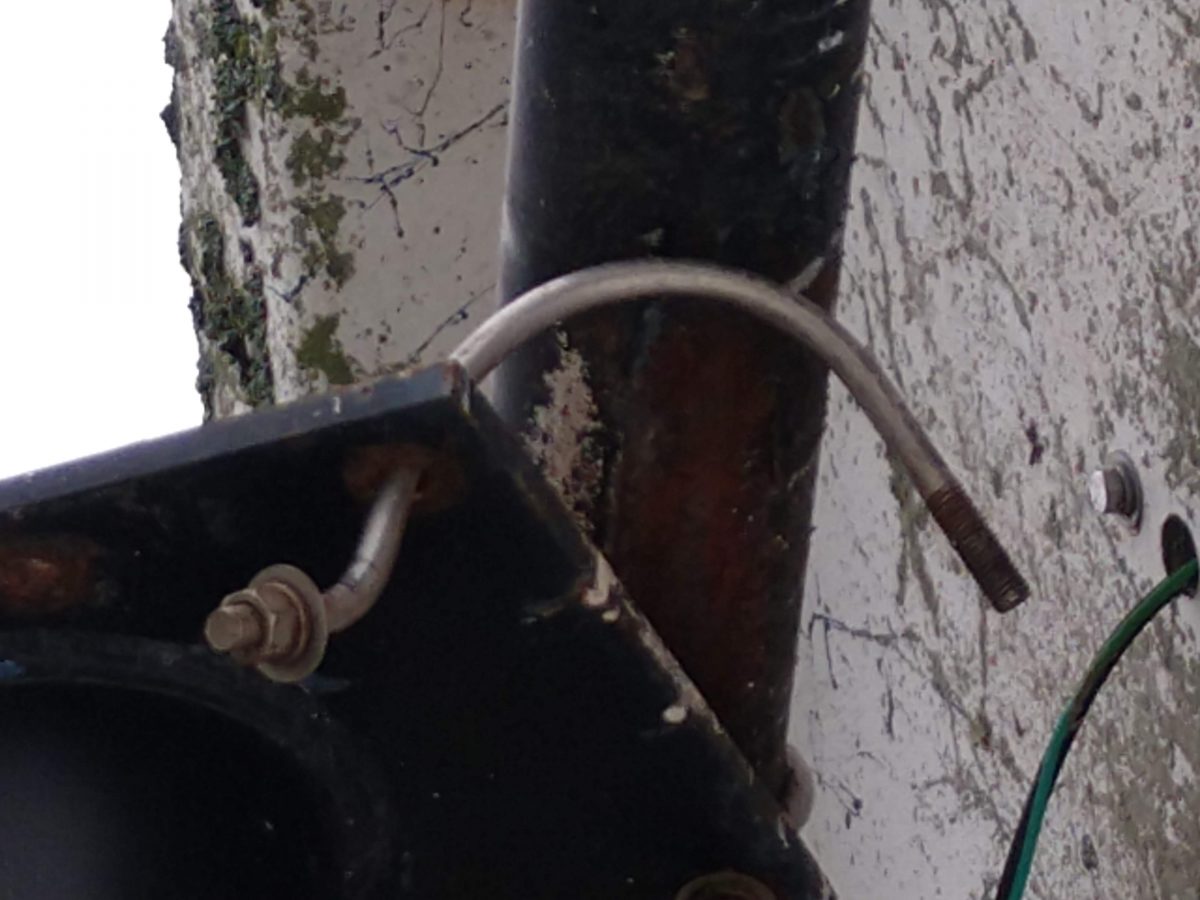
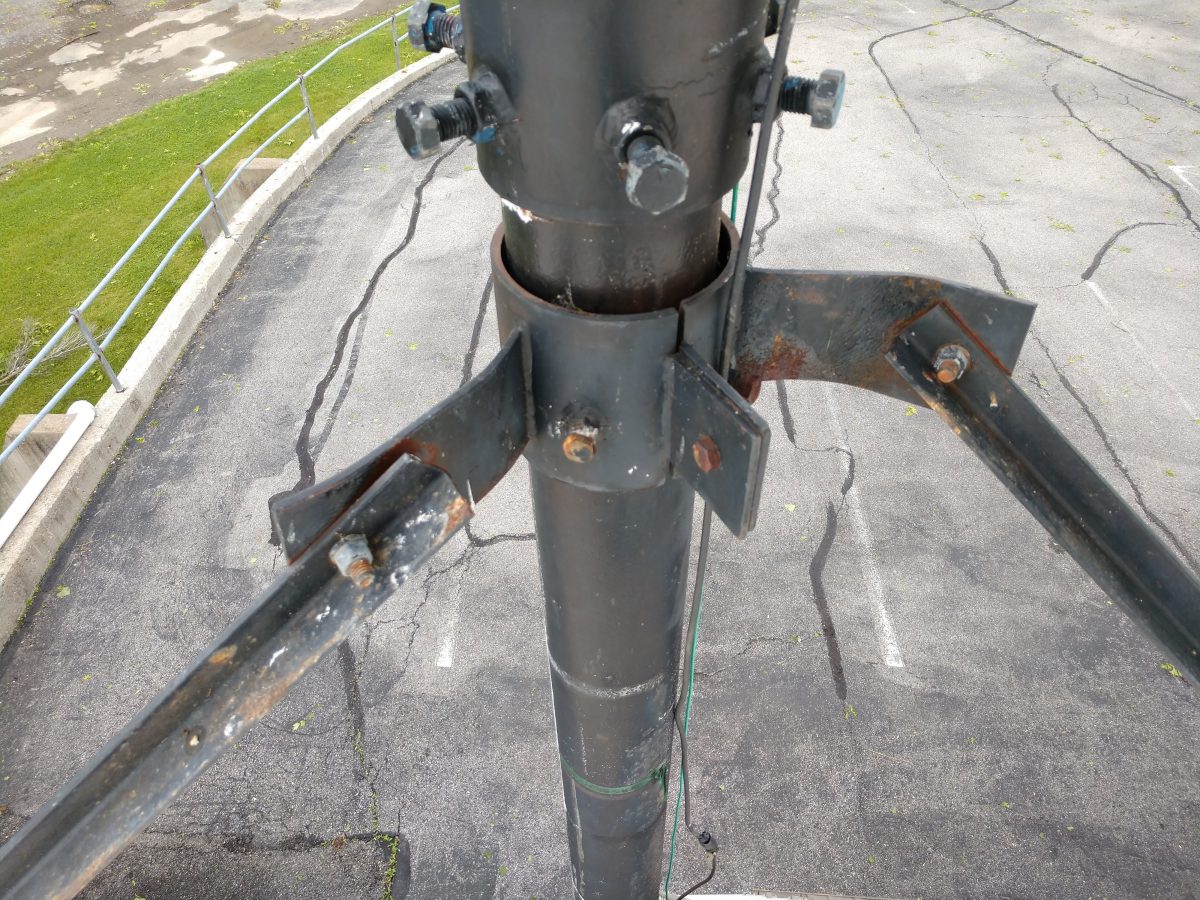
This dish had originally been put up when AMC-8 was the main commercial radio network bird in the US. The dish elevation was only 9 degrees above the horizon, so this had to be put up next to the building at roof top level to clear the trees and see 139W.
I was attempting to secure the dish but in the end, the 650 pound dish was too tenuous and the weather was still unstable. There was other damage to the dish thus we decided to take it down instead. Even that took a bit of doing. We were trying find a crane or bucket truck, but all that type of equipment had been pressed into service with recovery efforts. We finally undid all the bolts and bracing and fell it like a tree.
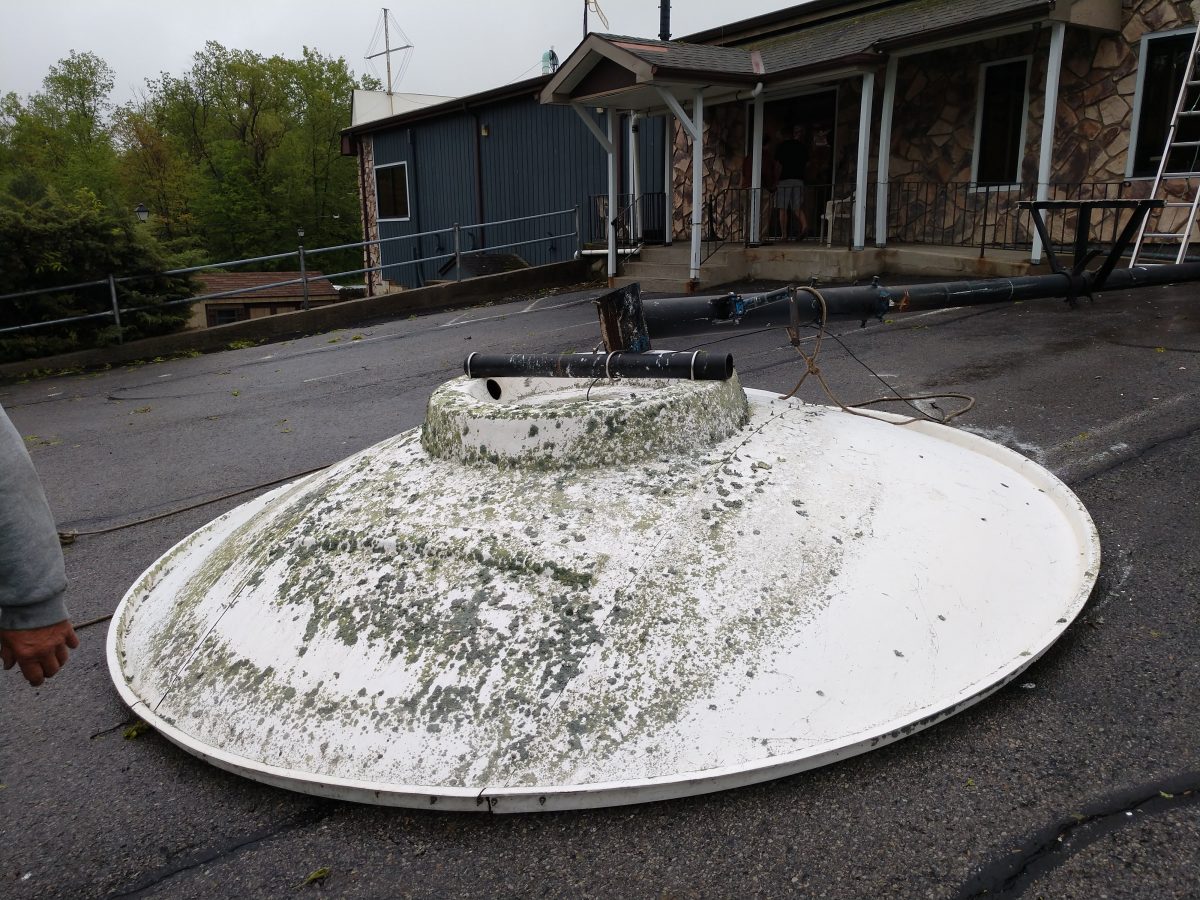
The dish was then cut up and put in the dumpster.
The new satellite dish will be installed next to building in a lower position.

